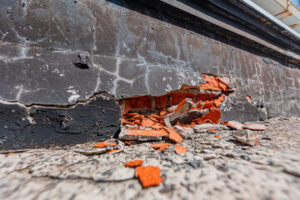When many people think of plumbing, they picture clogged toilets and leaky faucets. However, the trade is actually more complex than that. It requires advanced training and physical stamina, but it’s a reliable career path for those who want a stable job with good earning potential.

Plumber Oceanside CA installs and repairs pipes, fixtures and other appliances in homes and commercial buildings. They also interpret blueprints and building codes to assess plumbing systems and ensure compliance with regulatory standards.
When most people think of plumbers, they picture unclogging toilets and fixing leaky faucets. But the truth is that plumbers are responsible for a lot more than that. They are responsible for maintaining the water and sewage systems that keep our modern society running smoothly. This important job requires a combination of skills, including interpreting blueprints and building codes, installing pipes, and working with dangerous chemicals and materials. It also involves a certain amount of physical stamina and a high tolerance for uncomfortable or unpleasant conditions, like crawling into tight spaces or working with high-pressure systems.
Plumbing is a career that offers many opportunities for advancement and financial rewards. As a plumber, you can choose to work for yourself as an independent contractor or join a large corporation. In addition, you can pursue advanced certification to enhance your career prospects and earn higher pay. There are several vocational schools and trade organizations that offer courses on plumbing techniques and codes. In addition, many professional associations offer certifications in specialized fields, such as medical gas piping and process piping.
Residential Plumbers focus on the installation and repair of piping, fixtures, and appliances in homes and apartment buildings. They often work on new construction projects, laying out piping systems according to blueprints and building codes. They also install and repair sinks, showers, toilets, and water heaters. They may also work on gas systems and sprinkler systems. Plumbers in the field often interact with customers, providing advice and recommendations and assessing their needs.
Commercial and industrial plumbers deal with larger-scale piping systems in office buildings, retail stores, restaurants, hospitals, and power plants. They often collaborate with other professionals, such as engineers and construction teams, to ensure that plumbing systems are integrated seamlessly into building projects. They are also responsible for repairing complex plumbing equipment and analyzing data to diagnose problems.
Emergency services are another common aspect of this job. Plumbers who specialize in these services must be prepared to respond to calls 24/7 and tackle issues such as clogged drains and burst pipes. This career is ideal for those who enjoy hands-on work and problem-solving.
Educational requirements
A plumbing career requires a high school diploma and vocational training. This training can be completed at a community college or trade school. It can also be acquired through an apprenticeship program. This type of program can last several years and combines classroom education with on-the-job experience. It is a great way to get started in the field. It is important to make the most of your time in the program by asking questions and participating in class discussions. These activities will help you understand the course material and accelerate your learning process.
After finishing your apprenticeship, you must pass a licensing exam. These exams are available through the state and vary by jurisdiction. The exams cover various areas, including drafting, tool usage, and local plumbing codes. Many states require that plumbers complete continuing education classes to keep their licenses current. Taking these courses can help you remain up to date on the latest trends and technologies in the industry.
Plumbers must have a lot of technical skills. They need to be good at working with their hands and figuring out problems on the fly. They must be able to read blueprints and understand how different systems work together. They also need to have good customer service skills, as they interact with customers all the time.
In addition to the necessary technical skills, a plumber must have a strong work ethic and be willing to learn. There are a variety of positions that plumbers can find, including working in the construction industry or at plumbing supply houses. Some plumbers even work on the design side, drawing plans for mechanical and plumbing systems. In some cases, this requires a bachelor’s degree or more in engineering.
The educational requirements for a pipefitter are similar to those of a plumber, but they tend to focus on industrial settings. They install and repair heavy-duty, high-pressure pipes. They also maintain and upgrade the pipes used by manufacturing and energy production facilities. They must be familiar with the proper uses of a wide range of materials, such as steel, cast iron, and plastic.
Training requirements
Plumbing is an important trade that provides stability, good wages, and hands-on satisfaction. It is essential to know how to read and interpret blueprints, understand building codes, and have basic math skills. In addition, plumbers must be comfortable using hand and power tools and navigating cramped spaces. They must also be willing to work outside and inside homes, as well as deal with human waste products.
A training program for a plumber will teach you the basics of pipe systems, plumbing fixtures, and safety procedures. These programs often combine classroom instruction with on-the-job experience and are a great way to get started in the industry. In addition, many of these programs are offered through local unions, which provide additional support and benefits.
The training requirements for a plumber vary depending on the state, but most states require candidates to complete a vocational program or plumbing school before beginning an apprenticeship. These programs will teach you the technical aspects of plumbing and prepare you for an apprenticeship, which typically lasts four to five years. After completing an apprenticeship, you can obtain a journeyman plumber license, which will allow you to supervise other plumbers and apprentices.
In addition to technical skills, plumbers must have excellent customer service skills. They must be able to explain complicated issues in a clear and concise manner, and answer questions from customers. They should be able to identify problems, suggest solutions, and complete jobs on time.
Plumbers must also be able to read and interpret blueprints, which will help them assess the layout of the plumbing system. They must also be familiar with the different types of pipes, including PVC, CPVC, and PEX. They must be able to use hand and power tools, as well as understand the proper usage of materials such as copper, steel, and cast iron.
Plumbers must also have a high school diploma or GED certificate to become licensed. In some states, this requires taking a written exam. In others, it is a matter of demonstrating that you have the right amount of education and training and passing a background check.
Job outlook
A career as a plumber can be a lucrative and satisfying choice. It requires a high school diploma and technical training at a trade or community college, followed by an apprenticeship. The apprenticeship process allows aspiring plumbers to gain hands-on experience under the supervision of experienced plumbers. This helps them decide if plumbing is the right career for them and gives them a head start in the industry. Once they have acquired the necessary skills, they can move up the ranks to become journeyman plumbers.
The plumbing job outlook is good, with a faster rate of growth than most other occupations. As more buildings are being constructed and the water systems in those structures are becoming more complicated, there is an increasing demand for skilled plumbers. The Bureau of Labor Statistics reports that the number of jobs for plumbers is expected to grow over 14 percent between now and 2028.
As a result, this is an excellent time to begin training for a plumbing career. The job prospects for plumbers are excellent and salaries continue to increase with experience. Plumbers also have the option of becoming self-employed, which can lead to greater flexibility and higher earnings. Those interested in becoming plumbers should be aware of the physical demands of this profession, as it often involves working in tight spaces and lifting heavy objects. In addition, it is important to be physically strong and have good customer service skills.
The field of plumbing offers a variety of specialties, from residential to commercial. Some plumbers focus on remodeling bathrooms, while others specialize in industrial plumbing in large manufacturing plants or power stations. Others focus on green plumbing, which is designed to be more environmentally friendly and conserves resources. Keeping up with the latest technology and sustainable practices is important for plumbers.
Although the job outlook for a plumber is good, it can be difficult to get started in this field. Many states have programs to help aspiring plumbers train for a career in this field, and many of these programs are free or low-cost. These programs are available at local trade schools, vocational schools, and community colleges.








